This breeding season in Portugal, 15 Cinereous Vulture (Aegypius monachus) chicks hatched in the wild in the four existing colonies were tagged with GPS transmitters in the framework of the LIFE Aegypius Return project. How is the process of marking the hatchlings? What type of information is collected, and how can it help improving the conservation status of the species in Portugal? In this article, we reveal the methodology used by the project partners, step by step.
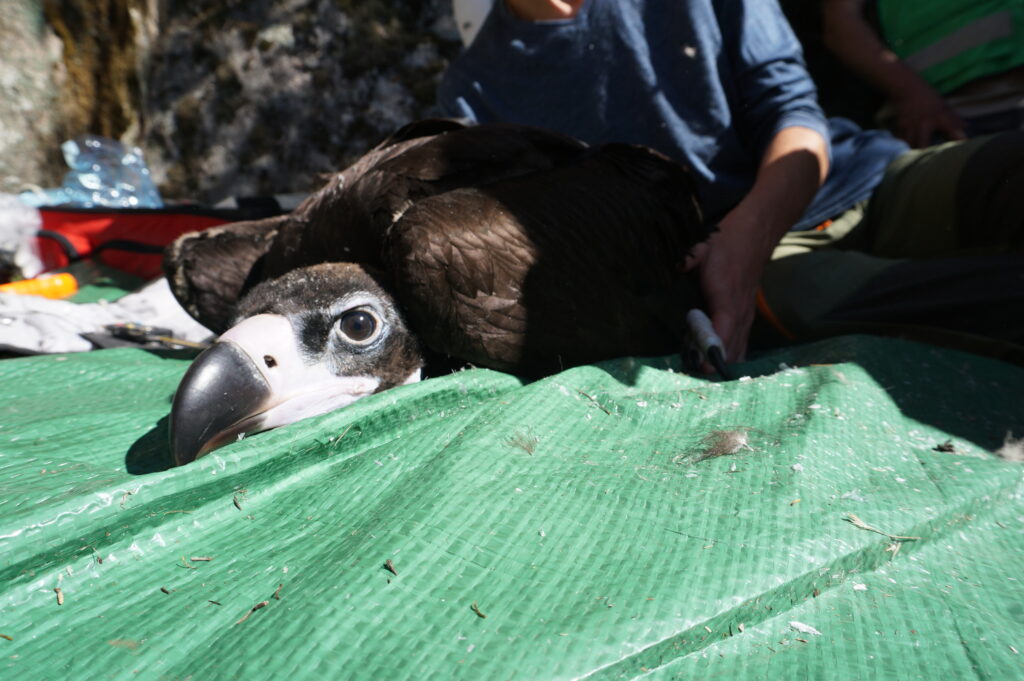
Tagging Cinereous Vulture chicks: how do we do it?
The monitoring teams have been in the field since the beginning of the year following from close the breeding pairs in the four known Cinereous Vulture colonies located in the Douro International Natural Park, the Serra da Malcata Nature Reserve, the Tejo Internacional Nature Park and the Herdade da Contenda. In addition to monitoring known breeding pairs, new nests were identified in all colonies, and potential expansion areas were prospected. The teams followed the development of the chicks in the nest to determine their condition and age, which is a fundamental decision factor to define the right moment for tagging.
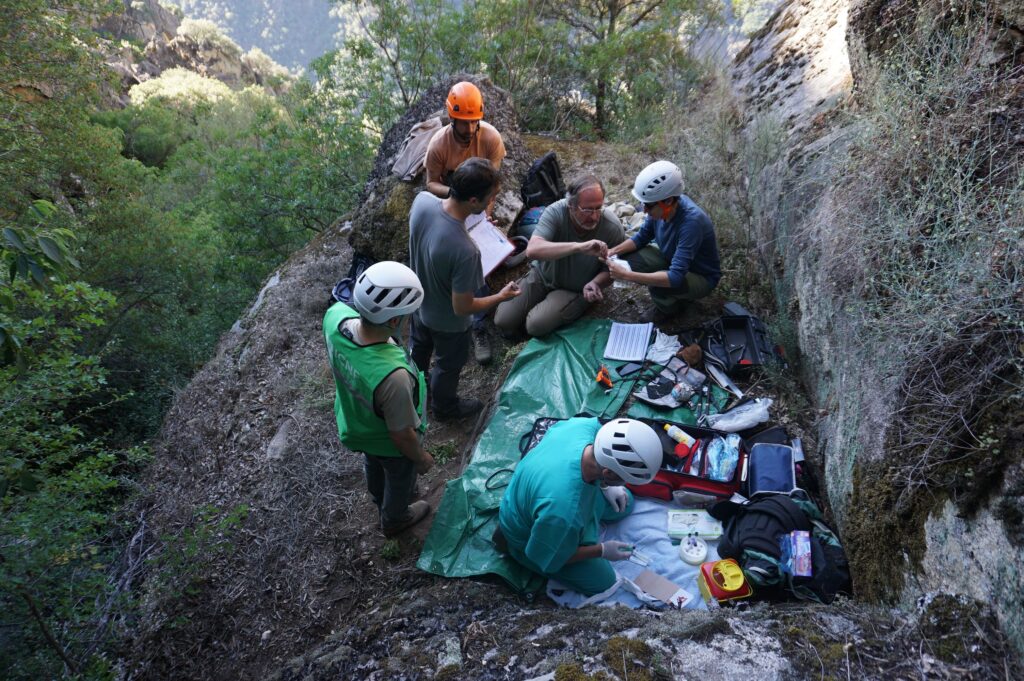

In the LIFE Aegypius Project, “tagging” consists of three different procedures:
1) Bird ringing
The most common marking in ornithology projects is ringing the birds with an ornithological small metal ring with a unique identifier code on one of the bird’s legs that works as its “Identity Card”. Whenever there is a new close contact with that particular bird – alive or dead, anywhere in the world, it is possible to consult its data, such as age, gender, weight, and places of registration, among others.
In Portugal, rings are issued by CEMPA – Centre for Migration Studies and Bird Protection. This body is part of the ICNF and manages the databases associated with ringing in the country. Bird ringing is restricted to experienced technicians duly accredited for this purpose.
2) Use of PVC rings to facilitate reading from a distance
Some projects, such as LIFE Aegypius Return, also use very light PVC rings with a colour code. These rings are slightly larger than the metal ones and allow information to be obtained by observing the birds from a distance.

3) Placement of GPS transmitters
Throughout the LIFE Aegypius Return project, 60 Cinereous Vultures will be tagged with a small GPS transmitter equipped with an accelerometer and a mini solar panel. This device weighs about 50 gr, irrelevant for a species that can weight 11 kg, and provides valuable information for protecting these vultures. The transmitters send the bird’s exact location in real-time and other important information such as its movements, position and temperature, allowing us to understand when the bird is feeding, resting or, for instance, if it is immobile or involved in a fight. The data received allows us to determine threat factors and enables local teams to act quickly if necessary.

Suppose a Cinereous Vulture (a priority species in terms of conservation) is detected in a stressful risk situation. In that case, the project technicians immediately inform the ICNF and the GNR (police officers), who will assess the situation and, if necessary, collect and transport the bird to the nearest wildlife rescue centre. Recently, 135 SEPNA/GNR agents participated in training sessions to consolidate their knowledge in rescuing and handling Cinereous Vultures detected in risk situations.
What to do when you find a weakened or endangered bird in Portugal? If you find a bird or other animal injured or in danger, inform the authorities through the SOS Environment and Territory line of GNR / SEPNA to 808 200 520.
Collecting biological samples to study genetic and biochemical information
Direct contact with birds as impressive and sensitive as the Cinereous Vulture is a unique opportunity, which must be optimised as much as possible to obtain scientific information that will help us make decisions for their conservation. Under the LIFE Aegypius Return project, all Cinereous Vultures retrieved from the nest are subjected to a veterinary medical examination to assess their body condition, general health status and the possible presence of injuries, diseases or parasites.
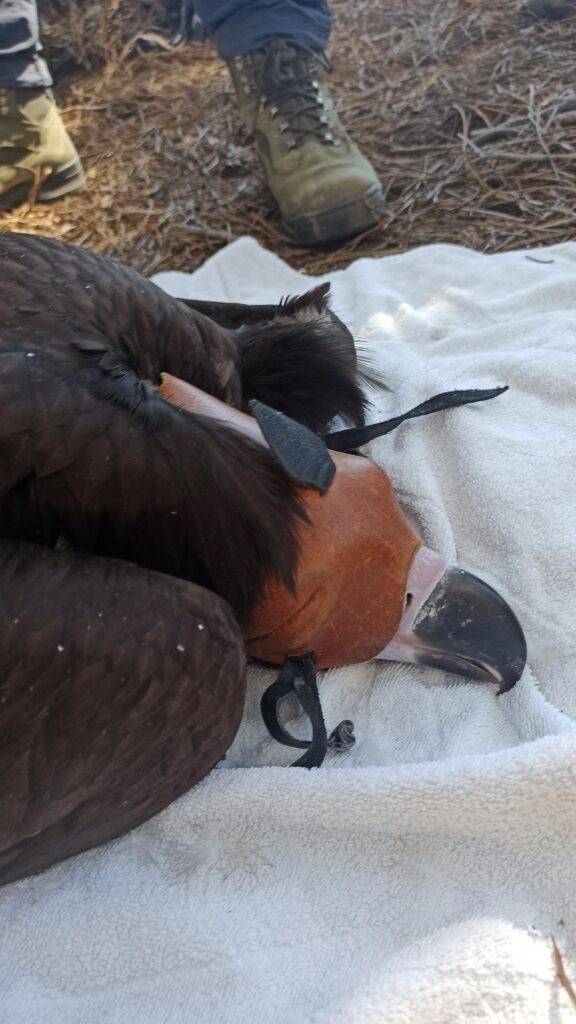



Medical examination and biometrics collected; photos Milene Matos and David Rodriguez
Various biometrics are also measured, such as beak length and wing size, and biological samples are taken from each bird, which are then sent to the laboratory to determine sex and to carry out biochemical, haematological, genetic and toxicological analyses. These studies make it possible, on the one hand, to obtain reference data and, on the other, to detect diseases or potential causes of risk or contamination.
Genetic analyses also make it possible to verify each individual’s lineage and understand population dynamics and reproduction patterns between colonies and regions. All this information is fundamental to better understanding the species and its threats, enabling a more rigorous and informed management of the conservation measures implemented.
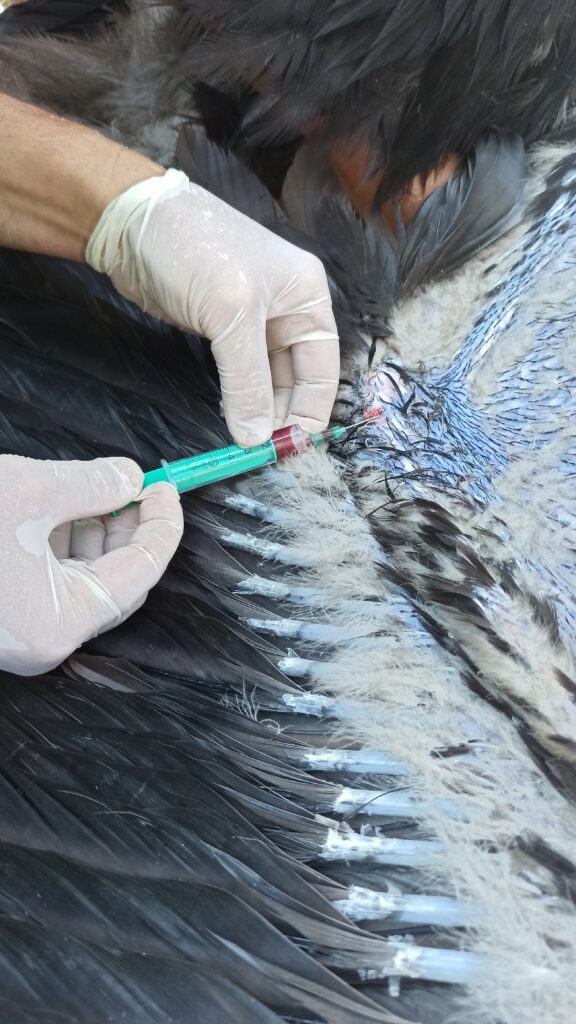




The importance of tagging Cinereous Vultures with GPS transmitters
When the chicks gain autonomy from their parents and fledge, the information received by their GPS transmitters will be essential to study their dispersal movements and act quickly if a potential risk situation is detected. The data received will also make it possible to identify priority areas for reducing the risk of collision or electrocution with electrical infrastructures by installing markers and insulation of electricity poles.
Throughout the LIFE Aegypius Return project, 60 Cinereous Vultures will be tagged and analysed, such as the 15 chicks marked this year, but also adults and juveniles who enter recovery centres. To strengthen the fragile population in the Douro International Natural Park, an acclimatisation aviary will be built and recovered birds will be directed there for a soft release. In the meantime, Zimbro, a Cinereous Vulture recovered, was released last March, and today, another Cinereous Vulture will be released in the same area.
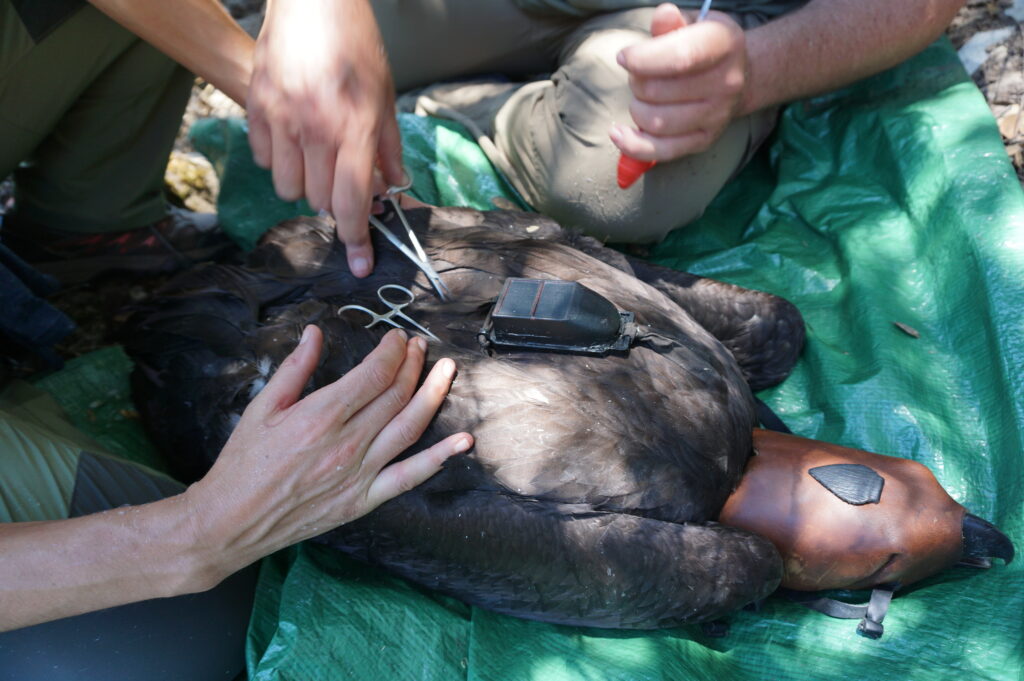

Reducing threats to strengthen the Cinereous Vulture in Portugal
To increase breeding success, natural nests are improved and new artificial platforms are installed in potential nesting areas before the beginning of the breeding season. It is also ensured that anthropogenic disturbances are minimised around the nests throughout the season.
To double the number of breeding pairs in Portugal by 2027, project partners are also implementing measures to mitigate the species’ stress factors and mortality causes, in partnership with other organisations, such as training sessions with police officers responsible for wildlife rescue, which took place this year. Information sessions have been organised to reduce the threat of lead poisoning, and training sessions on ballistics with alternative ammunition will be held to support hunters and game managers transitioning to lead-free ammunition.
About the LIFE Aegypius Return project
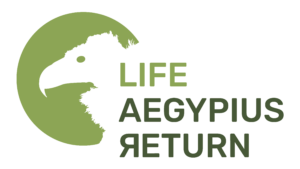
The LIFE Aegypius Return is a 3.7 million project, co-financed by the European Union’s LIFE Programme, whose success relies on the involvement of all relevant stakeholders and the extensive collaboration of the leading project partner, the Vulture Conservation Foundation (VCF), with all local partners: Palombar – Conservação da Natureza e do Património Rural, Herdade da Contenda, Sociedade Portuguesa para o Estudo das Aves (SPEA), Liga para a Protecção da Natureza (LPN), Associação Transumância e Natureza (ATN), Fundación Naturaleza y Hombre (FNHY), Guarda Nacional Republicana (GNR) and Associação Nacional de Proprietários Rurais Gestão Cinegética e Biodiversidade (APNC).




